Snake Plant (Sansevieria Trifasciata)
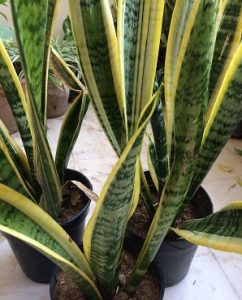 The Snake Plant is unique in its characteristics as it sucks in carbon dioxide and releases oxygen during the night. NASA research has even shown that snake plants are able to help keep the air inside your home clean, removing toxins such as formaldehyde and benzene so people even chose to keep it in their bedroom or carpeted living room. This plant is also easy to maintain and can be neglected for weeks at a time and still look fresh. Additionally, they can survive low light levels, drought and have few insect problems. They are indeed the perfect houseplants.
The Snake Plant is unique in its characteristics as it sucks in carbon dioxide and releases oxygen during the night. NASA research has even shown that snake plants are able to help keep the air inside your home clean, removing toxins such as formaldehyde and benzene so people even chose to keep it in their bedroom or carpeted living room. This plant is also easy to maintain and can be neglected for weeks at a time and still look fresh. Additionally, they can survive low light levels, drought and have few insect problems. They are indeed the perfect houseplants.
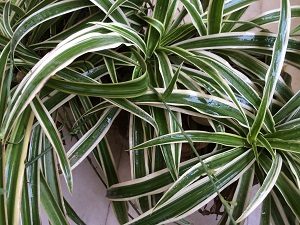 Spider Plant (Chlorophytum Comosum)
Spider Plant (Chlorophytum Comosum)
As per NASA, Spider Plants are one of the best air-purifying plants effective in removing toxic agents including benzene, formaldehyde, carbon monoxide and xylene, a solvent used in leather, rubber and printing industries. They are highly recommendable for any home and office seeking clean air and further NASA researchers suggest that efficient air cleaning is accomplished with at least one plant per 100 square feet of space. Spider Plants are also relatively easy to grow and thrive in cool to average home temperatures and prefer dry soil.
Rubber Plant (Ficus Robusta)
This low –maintenance plant is a powerful toxin eliminator and air purifier. They absorb exhaled carbon dioxide and convert it to breathable oxygen. Rubber plants also eliminate bacteria and mold spores in the air. Its large leaves can absorb airborne chemicals and break them down, making it harmless. In fact, these plants can purify and rejuvenate air within our houses and workplaces, safeguarding us all from any side effects connected with prevalent toxins such as formadehyde, ammonia and also benzene. Rubber plants can be thrive in dim light so perform well in variety of indoor conditions.
Peace Lily (Spathiphyllum)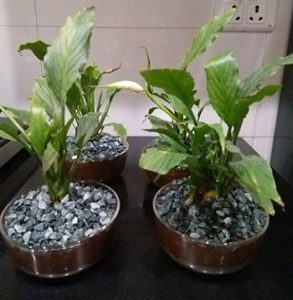
The Peace Lily is visually appealing, deep forest evergreen plant with its unique white flowers. It’s a great general cleanser and air purifier that effectively removes trichloroethylene, benzene, acetone, and alcohols from the air. Peace Lily can improve air quality as much as 60 percent as it helps to reduce the levels of mold spores that grow in the home or office by absorbing those spores through its leaves and then circulating them to the plant’s roots where they are used as food. This plant does well in indirect light and requires moderate watering, which are the reasons why they’re one of the most popular plants to keep in your home or office.
Boston Fern (Nephrolepis Exalta Bostoniensis)
This lush plant functions really well as a natural air humidifier and can help to restore moisture in the air so they are perfect for those who suffer from dry skin and other cold weather problems. While it’s busy adding humidity to the environment, Boston Fern is also credited with improving air quality in homes and offices by eliminating formaldehyde. Its large feathered ferns span as large as 5 feet and allow just a single plant to have a noticeable impact. Indirect lighting is the best for this plant, and its soil should remain damp.
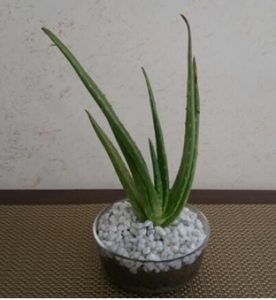 English Ivy (Hedera Helix)
English Ivy (Hedera Helix)
The English Ivy or European Ivy is ideal for pots as its invasive nature allows it to spread easily while this plant is also extremely popular in outdoor landscaping. According to NASA’s Clean Air Study, English Ivy is effective at cleansing benzene, formaldehyde, xylene and toluene from the air. The plant is also great for a family with smokers in it. Its ability to soak up carcinogens from second-hand smoke helps to purify small areas. It’s also versatile when it comes to growing conditions and doesn’t require much maintenance. You can keep it at a constant temperature, offer plenty of direct sunlight and water generously with well-drained soil.
Aloe Vera (Aloe Vera or A. barbadensis)
Aloe Vera is a great plant to improve your office & home’s air quality by keeping area free from benzene and formaldehyde. This plant's leaves also contain a clear liquid full of vitamins, enzymes, amino acids, and other compounds that have wound-healing, antibacterial, and anti-inflammatory properties. Aloe vera also contains proteolytic enzymes which repairs dead skin cells on the scalp, prevents itching on the scalp, reduces dandruff and acts as a great hair conditioner. Aloe plants are an attractive succulent with thick, variegated leaves, easy to grow and require pretty low-maintenance.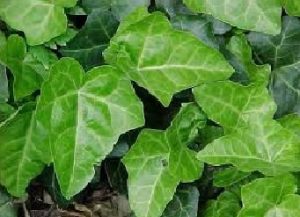
Dracaena (Dracaena Marginata)
Dracaena is a low-maintenance attractive houseplant of vivid foliage, with stripped narrow leaves which can easily thrive indoors with only small amount of sunlight and moderate watering. It will tolerate irregular watering rhythms and dry soil much better than too much water. This single plant can grow over ten feet tall, but pruning will keep it short as you prefer. Also referred as the Dragon Tree, Dracaena filter out benzene, formaldehyde, trichloroethylene, xylene, and toluene out of your environment.
Golden Pothos (Epipremnum Aureum)
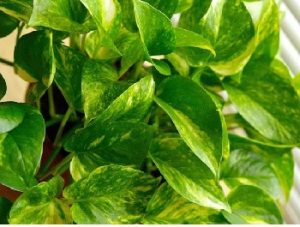 NASA considered Golden Pothos commonly known as Devil’s Ivy, Money Plant, Silver Vine etc., as one of the most effective choices for eliminating formaldehyde. It is an effective eliminator of carbon monoxide as well and one of the most effective plants to reduce indoor air pollution. Devil’s ivy use is essentially as a decorative element in homes, offices and shopping malls etc with its showy yellow and green leaves in heart like shape and looks great suspended from elevated areas. This plant does best in partial shade conditions year round while too much sunlight burns its leaves, causing them to loose their marbled quality.
NASA considered Golden Pothos commonly known as Devil’s Ivy, Money Plant, Silver Vine etc., as one of the most effective choices for eliminating formaldehyde. It is an effective eliminator of carbon monoxide as well and one of the most effective plants to reduce indoor air pollution. Devil’s ivy use is essentially as a decorative element in homes, offices and shopping malls etc with its showy yellow and green leaves in heart like shape and looks great suspended from elevated areas. This plant does best in partial shade conditions year round while too much sunlight burns its leaves, causing them to loose their marbled quality.
Bamboo Palm (Chrysalidocarpus lutescens)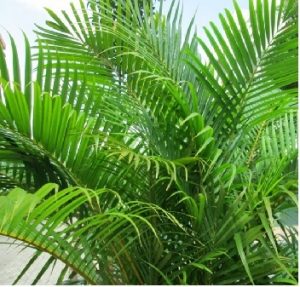
Also known as Butterfly Palm and Areca Palm, the Bamboo Palm is another hardy plant that does an excellent job as an indoor, air purifier with a particular penchant for formaldehydes, benzene and carbon monoxide. As an added benefit beyond air purification, Chrysalidocarpus lutescens is also a natural humidifier, producing a liter of ambient water every 24 hours, making it a well suited plant for dry climates or those with breathing troubles. Bamboo Palms grow rapidly and can become quite large, but its vertical growth can be checked by keeping them confined to smaller pots. These plants prefer bright, filtered light and enjoy being watered frequently when growing, however, in the winter months, the water requirement is less.